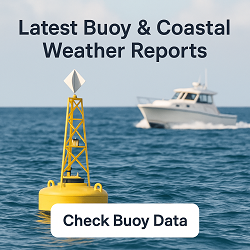Tontitown, AR Weather Forecast and Current Conditions (72770)
Current Conditions From Nearby Local Station

Feels Like 74°F
at
Current Conditions From Nearby Local Station

Feels Like 74°F
at
Point Forecast at a Glance







This Date in Weather History
1896 - A hurricane formed on September 22 and lasted until September 30. It formed directly over the Lesser Antilles and hit Cuba, Florida, Georgia, South and North Carolina, Virginia, Washington D.C., and Pennsylvania. Its maximum sustained winds were at 130 mph. The heaviest rainfall deposited in association with the storm was 19.96 inches at Glennville, Georgia. This hurricane was responsible for an estimated 130 deaths and $1.5 million in damage.
More on this and other weather history
Tontitown 7 Day Weather Forecast Details
Tuesday Sep 30

Day: Partly sunny, with a high near 82. East wind around 5 mph.

Night: Mostly clear, with a low around 57. East wind 0 to 5 mph.
Wednesday Oct 1

Day: Sunny, with a high near 84. Southeast wind 0 to 5 mph.

Night: Clear, with a low around 59. East wind 0 to 5 mph.
Thursday Oct 2

Day: Sunny, with a high near 85. Southeast wind around 5 mph.

Night: Clear, with a low around 63. Southeast wind around 5 mph.
Friday Oct 3

Day: Sunny, with a high near 84. Southeast wind 5 to 10 mph.

Night: Clear, with a low around 61. Southeast wind 5 to 10 mph.
Saturday Oct 4

Day: Sunny, with a high near 81. South wind around 10 mph.

Night: Clear, with a low around 61. Southeast wind around 10 mph.
Sunday Oct 5

Day: Sunny, with a high near 83. South wind 10 to 15 mph, with gusts as high as 20 mph.

Night: Clear, with a low around 61. Southeast wind 5 to 10 mph.
Monday Oct 6

Day: Sunny, with a high near 82. Southeast wind 5 to 10 mph.

Night: Mostly clear, with a low around 61. East wind around 5 mph.
Sun & Moon Monthly
Sunrise 7:12 AM
Sunset 7:03 PM
Last Light 7:29 PM
Moonset ------

Contiguous United States Extremes
Mon's High Temperature
101 at 16 Miles Southwest Of Tecopa, CA
Tue's Low Temperature
28 at 9 Miles East-southeast Of Creede, CO and Leadville, CO
Weather Folklore
Tulips open their blossoms when the temperature rises, they close again when the temperature falls.
Current subscribers - login to your ClearSky account
About Tontitown, Arkansas
Tontitown is a city in northern Washington County, Arkansas, United States. The community is located in the Ozark Mountains and was founded by Italian settlers in 1898. Known for its grapes and wines, Tontitown has hosted the Tontitown Grape Festival continuously since 1898. It is part of the Northwest Arkansas region, serving as a bedroom community for larger neighbors Fayetteville and Springdale. The town experienced a 160% growth in population between the 2000 and 2010 censuses.
Content from Wikipedia, licensed under CC BY-SA 3.0.
How We Provide Better Local Weather
Current conditions: We use the nearest available station to your location - including professional MESONET/MADIS and local weather stations - often miles closer than regional airports.
Forecasts: National Weather Service point forecasts predict for your specific area, not broad regional zones, making them far more relevant to your location.

